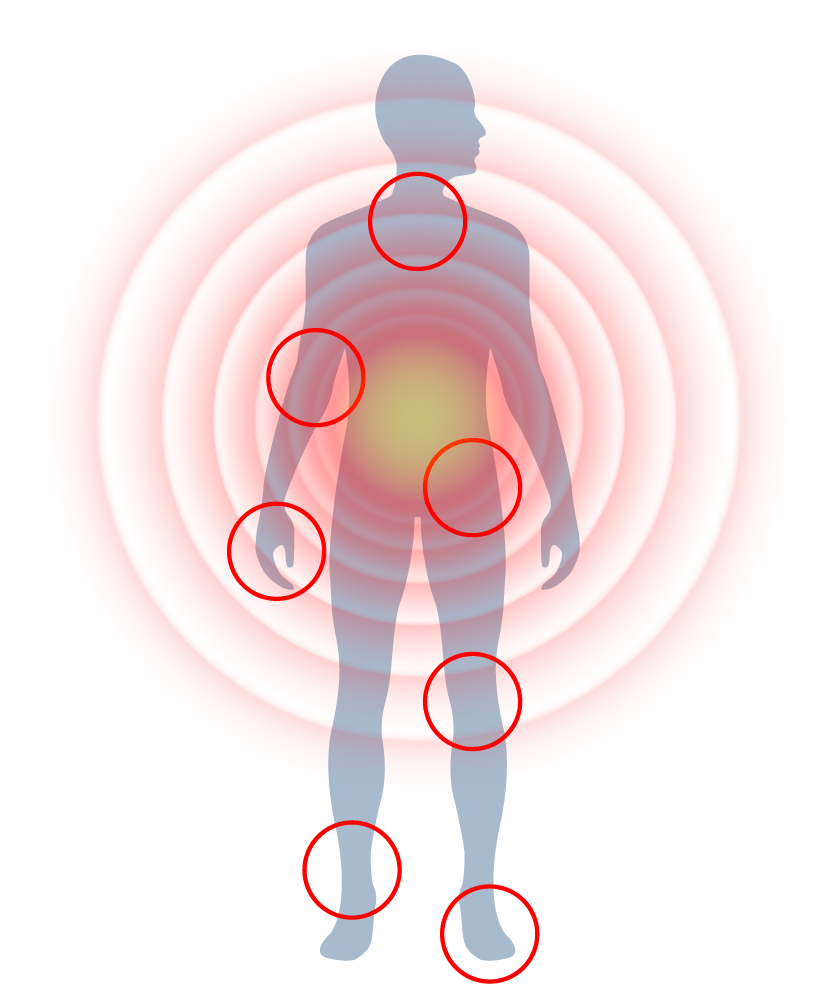Our Orthopedic Services
Our Orthopedic Services
Our Orthopedic Services
- A Spinal Laminectomy is a procedure that is used to treat spinal stenosis or pressure on the nerves of the low back. The surgery involves an incision on the back of the spine that allows the surgeon to remove bone spurs and thickened ligaments that are pressing on the nerves of the low back.
- Spinal Fusions are used to treat instability of the spine, scoliosis, severe degeneration of the discs, or a combination of these issues. A fusion involves using bone from the patient’s body to fuse one vertebrae to another. Spinal instrumentation is placed into the vertebrae to stabilize the motion segment and assist with the fusion process
- Cervical Fusion is a surgical procedure that links together damaged segments of the vertebral column in the neck. This surgery is usually required when the cervical vertebrae and the discs between each vertebra have become damaged as a result of an injury or chronic wear-and-tear.
- A Rotator Cuff Repair surgery repairs a torn rotator cuff and most often involves re-attaching the tendon to the head of the humerus (upper arm bone). A partial tear, however, may need only a trimming or smoothing procedure called a debridement. A complete tear is repaired by stitching the tendon back to its original site on the humerus.
- A Shoulder Arthroscopy is a surgical procedure orthopedic surgeons use to visualize, diagnose, and treat problems inside a joint. Your surgeon will make a small incision in the skin and then insert pencil-sized instruments that contain a small lens and lighting system to magnify and illuminate the structures inside the joint. Through this technique, the surgeon is able to the interior of the joint. The surgeon can then determine the amount or type of injury and then repair or correct the problem, if it is necessary.
- In a Torn Labrum repair, the surgeon will reattach the torn ligaments and labrum to the bone. Surgery may be required if the labrum tear gets worse or does not improve after time or with physical therapy.
- Simply defined, arthritis is inflammation of one or more of your joints. In a diseased shoulder, inflammation causes pain and stiffness. Shoulder Arthritis may be treated with arthroscopy, During arthroscopy, the surgeon inserts a small camera, called an arthroscope, into the shoulder joint. The surgeon uses these images to guide miniature surgical instruments. During the procedure, your surgeon can debride (clean out) the inside of the joint.
- Shoulder Fracture repair surgery usually involves fixing the fracture using plates, screws, or pins. Shoulder surgery is necessary when there is a compound fracture that has broken through the skin or the bone is severely out of place. Shoulder surgery is also often necessary if bone fragments have shifted out of position.

- An Epidural Steroid Injection (ESI) is a minimally invasive procedure that can help relieve neck, arm, back, and leg pain caused by inflamed spinal nerves due to spinal stenosis or disc herniation.
- A Rhizotomy is a surgical procedure to sever nerve roots in the spinal cord. The procedure effectively relieves chronic back pain and muscle spasms.
- In Spinal Cord Stimulation, a small device, similar to a pacemaker, delivers electrical pulses to the spinal cord. It helps patients better manage their chronic pain and reduce their use of opioid medications. It may be a good option if you suffer chronic back, leg or arm pain and have not found relief with other therapies.
- Ketamine Infusion therapy is administered intravenously (IV) and is a treatment option for a variety of chronic pain conditions.
- A Knee Arthroscopy is used to diagnose and treat a wide range of knee problems. It is a surgical procedure used to visualize, diagnose, and treat problems inside a joint. Your surgeon will make a small incision in the skin and then insert pencil-sized instruments that contain a small lens and lighting system to magnify and illuminate the structures inside the joint. Through this technique, the surgeon is able to the interior of the joint. The surgeon can then determine the amount or type of injury and then repair or correct the problem, if it is necessary.
- Knee arthroscopy is one of the most commonly performed surgical procedures. In it, a miniature camera is inserted through a small incision (portal). This provides a clear view of the inside of the knee. Your surgeon inserts miniature surgical instruments through other portals to trim or repair the meniscus tear. In a Partial meniscectomy, the damaged meniscus tissue is trimmed away. In a Meniscus Repair, the tears are repaired by suturing (stitching) the torn pieces together. Whether a tear can be successfully treated with repair depends upon the type of tear, as well as the overall condition of the injured meniscus.
- ACL Surgery to rebuild an anterior cruciate ligament is done with an arthroscope using small incisions. Arthroscopic surgery is less invasive. The benefits of less invasive techniques include less pain from surgery, less time spent in the hospital, and quicker recovery times. Most ACL tears cannot be sutured (stitched) back together. To surgically repair the ACL and restore knee stability, the ligament must be reconstructed. Your doctor will replace your torn ligament with a tissue graft. This graft acts as a scaffolding for a new ligament to grow on.
- Carpal tunnel syndrome is a common condition that causes pain, numbness, and tingling in the hand and arm. The condition occurs when one of the major nerves to the hand — the median nerve — is squeezed or compressed as it travels through the wrist. In Endoscopic Carpal Tunnel Surgery, your doctor makes one or two smaller skin incisions—called portals—and uses a miniature camera—an endoscope—to see inside your hand and wrist. A special knife is used to divide the transverse carpal ligament, similar to the open carpal tunnel release procedure.
- Endoscopic Ulnar Nerve release, is a minimally invasive, promising, cutting-edge surgical technique devised to decompress the ulnar nerve. Most cases of ulnar tunnel syndrome are caused by a growth at the wrist. The growth must be removed surgically. An experienced hand surgeon can remove cysts, scar tissue, or other causes of compression on an outpatient basis. Once the pressure point is removed, the feeling will return and the numbness and tingling will decrease.
- Nerve release surgery is any operation to alleviate pressure on a nerve. Some nerves are more prone to compression than others due to the surrounding skeletal structure. The aim of nerve decompression is to either remove whatever is pressing on the nerve or open up any narrow spaces to give the nerve more room, or both.
- Upper Extremity (hand, wrist, forearm, elbow, upper arm, and shoulder) usually involves fixing the fracture using plates, screws, or pins. Surgery is necessary when there is a compound fracture that has broken through the skin or the bone is severely out of place. Surgery is also often necessary if bone fragments have shifted out of position.
- Tendon repair surgery is necessary when one or more tendons in your hand rupture or are cute, leading to the loss of normal hand movements. Tendon damage can also cause pain and swelling in your hand. Tendon repair surgery involves a surgeon making an incision in your wrist, hand or finger so they can locate the ends of the divided tendon and stitch them together.
- Nerve compression is treatable with a surgical release. Nerve decompression of the legs and feet provide significant pain relief, better sensation, and stronger balance and gait. The affected nerves in the lower leg and feet are identified and the sites of compression are surgically released to allow for improved blood flow in the nerve and to remove the additional injury of nerve compression.Lower Extremity Fracture Surgery.
- Lower Extremity Fracture Surgery (hip, thigh, knee, lower leg, ankle and foot) usually involves fixing the fracture using plates, screws, or pins. Surgery is necessary when there is a compound fracture that has broken through the skin or the bone is severely out of place. Surgery is also often necessary if bone fragments have shifted out of position.
- Damage to the peripheral nerves can lead to chronic pain that can sometimes be difficult to diagnose and treat. Lower Extremity Peripheral Nerve Surgery relieves pressure on a specific nerve or by dividing the nerve above the site of injury the surgeon can decrease or even eliminate a patient’s chronic pain.
- Minimally Invasive Foot and Ankle Surgery is a less invasive type of surgery that can result in better cosmetic results, quicker recovery times and less postoperative pain. Minimally Invasive Foot and Ankle Surgery treats conditions such as: Plantar Fasciitis, Hammertoes, Foot and Ankle Contractures, OCD’s, Bone Cysts, Bone Contusions, Stress Reactions and Fractures, Ankle Pain, Ankle Arthritis, Bone Spurs, Ligament and Cartilage Injuries

